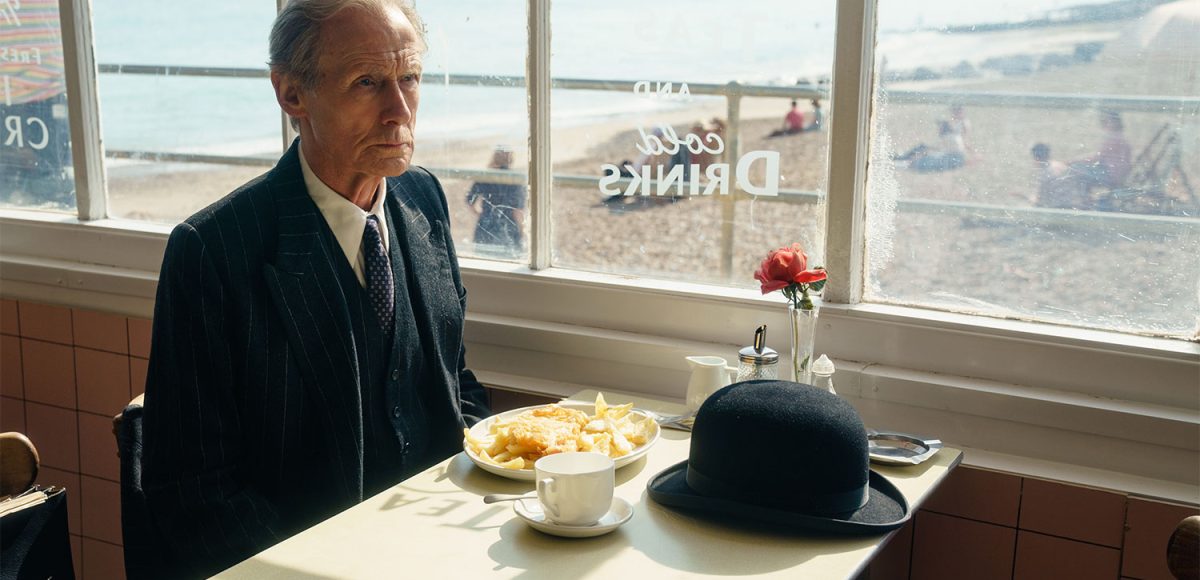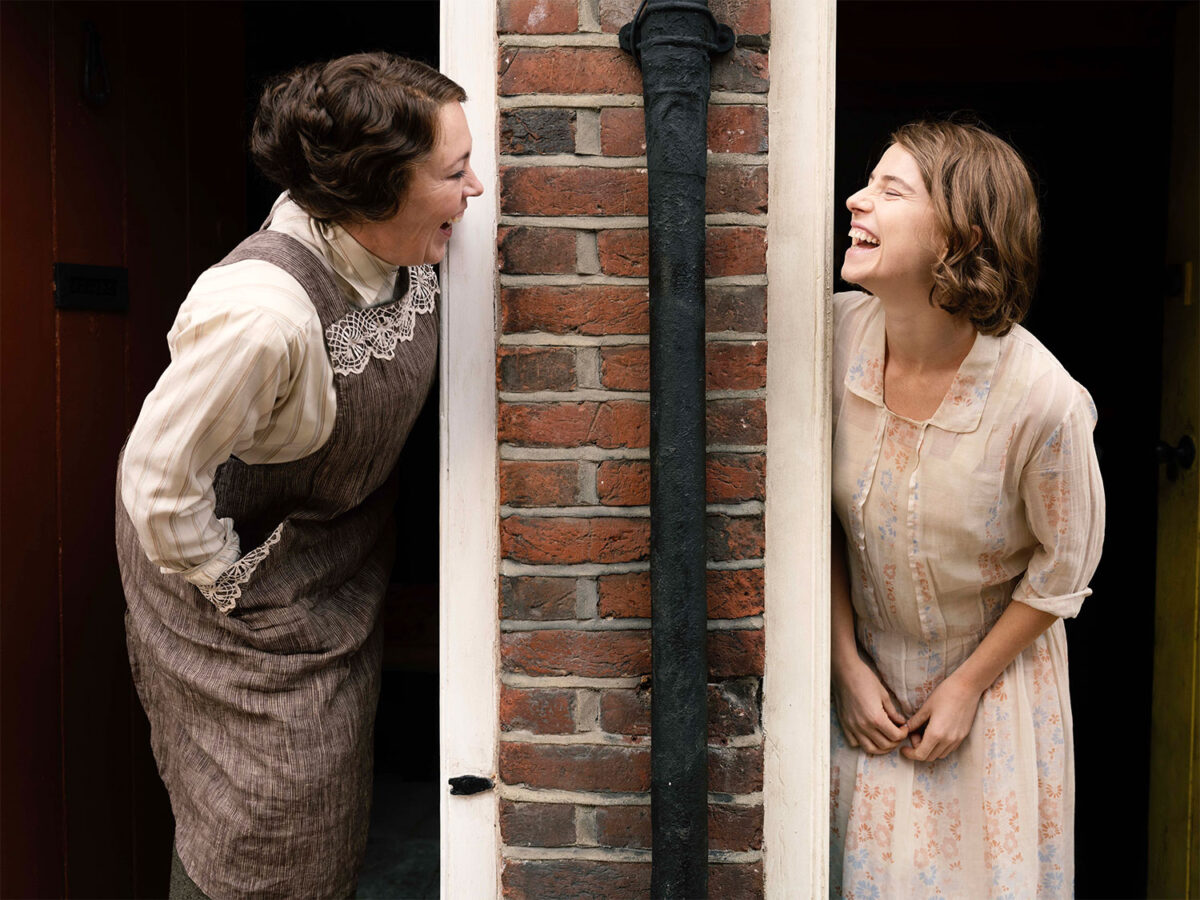Opening on archival footage establishing location, London, and time, post World War II, it is enhanced imaginatively by the palette of that peculiar combination of fading yet over-saturated colors so common to films of the 1950s. We see the hustle bustle and uniform sameness of bowler hats, umbrellas, and dark suits as workers on all steps of the ladder make their way to work. It immediately brought to mind the men in bowler hats and dark overcoats raining from the sky in the Beatles animated movie “Yellow Submarine.”
Today is the first day of Peter Wakeling’s new civil service job in the public works division. Boarding the train into London, he meets his colleagues, Middleton, Rusbridger, and Hart, all long-termers with helpful advice. Their boss, Mr. Williams, will soon board the train, but ride separately. He is not to be addressed unless he addresses you. If Wakeling was unaware, which is unlikely, of the hierarchical system in business (or anywhere else, for that matter), he has just had a lesson of great importance in the art of survival.
Dressed impeccably, all the men make their way through a warren of cramped, dark office spaces. Theirs, like the others, is separated by a large glass and wood door opening onto five desks in close proximity, the fifth belonging to Girl Friday, Margaret Harris. Odd man, or rather woman, out, she has a sunny smile and a sense of humor. But then she can afford to. She’s a short-timer, both by choice and expectation, and has been offered an assistant manager position at a nearby Lyons Corner House and Tea Shop. The sixth and most prominent desk at the head, psychologically separated from the others by mountainous vertical files, is Williams’ seat of power. The overall look is positively Dickensian and has, no doubt, not changed since the mid-19th century.
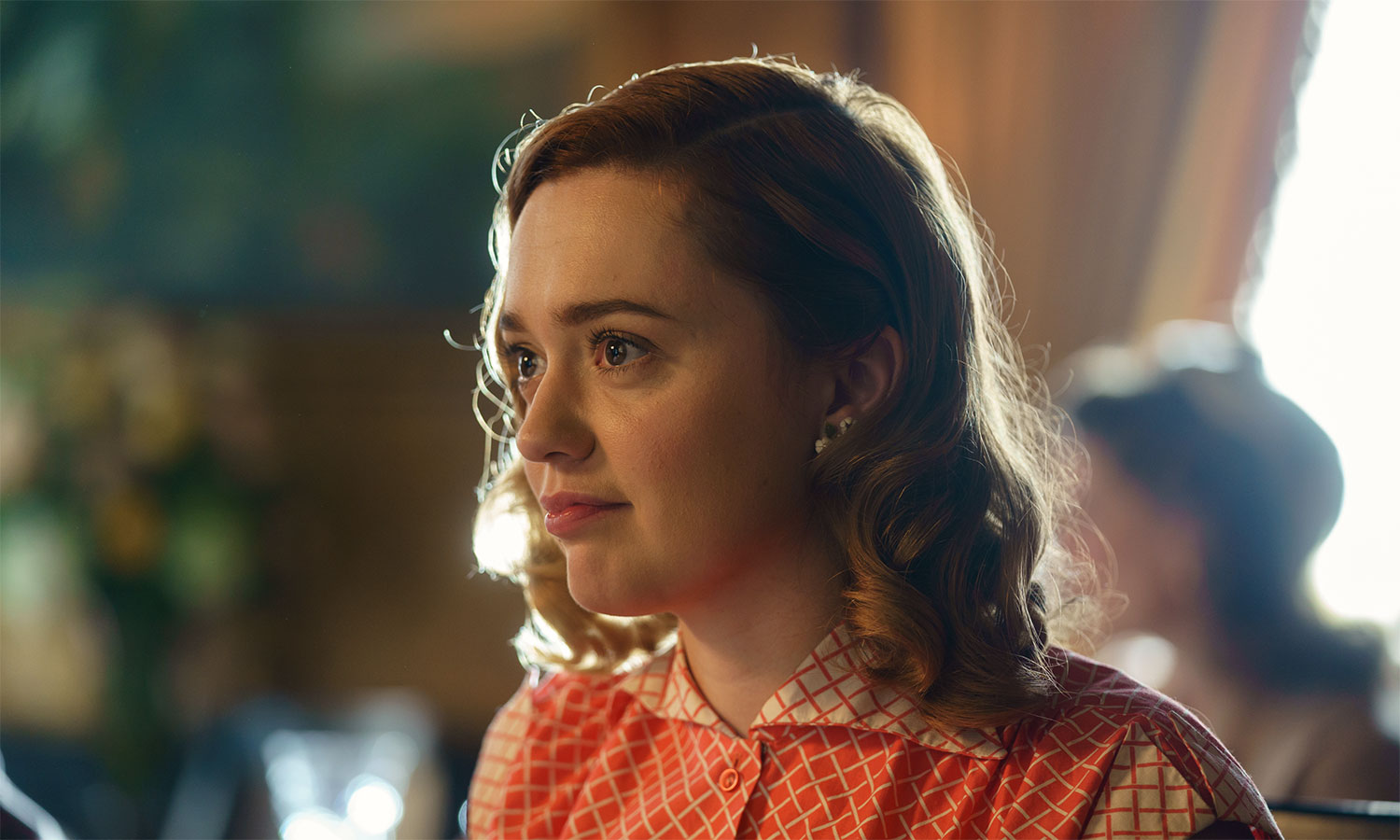
A hush falls over the group as the pinched, prune-faced Williams arrives, umbrella sharply at his side, bowler hat firmly affixed, pinstriped suit immaculate. Unburdening himself of his accessories, he sits and the work of the day can begin. Inboxes are filled to overflowing with projects waiting for approval. Outboxes are virtually empty. Like all the other departments, their job is to pass along requests to someone else for rejection. This is post-war England, rationing still exists, and there is no money for rebuilding. Their job is to push paper, literally and figuratively, until it disappears through neglect, benign or otherwise.
Returning for another one of endless go-rounds are the three ladies who want a bombed out enclosed square in their lower class neighborhood made into a park for the children who have no recreation areas. Taking their petition, Williams explains that this is really a case for a different department and that they must get the approval there. But, as a kindness, he will send his new employee, Wakeling, to accompany them. This, as you will surmise, was not a favor to the women but a way to inculcate Wakeling into maintaining the status quo. Needless to say, when they end up where they began, Williams gives them a tight smile, takes the petition and files it among the others in his inbox, to stay there until they inevitably reappear.
But today is somewhat different. Williams announces that he will be leaving early for an engagement. The look of surprise on the men’s faces indicates how out of the ordinary this is. So, bowler on head, umbrella at his side, suit smoothed, Williams departs. He has an appointment with his doctor for the results of tests taken weeks ago. On the one hand, the news is dire, on the other, it is the first day of the rest of his life.
Home offers him little in the way of comfort. Living with his son and daughter-in-law, he finds no outlet for conversation. His son is definitely a chip off his block and the daughter-in-law lets her resentment of his presence show through in her every action. Taking a later train the next day, he has decided to skip work. And then skips it again. It becomes a pattern of action, or perhaps it’s inaction, changing only when he accidentally stumbles over Miss Harris, now employed at Lyons. In a remarkably uncharacteristic gesture, he asks her to tea and an unlikely friendship is born.
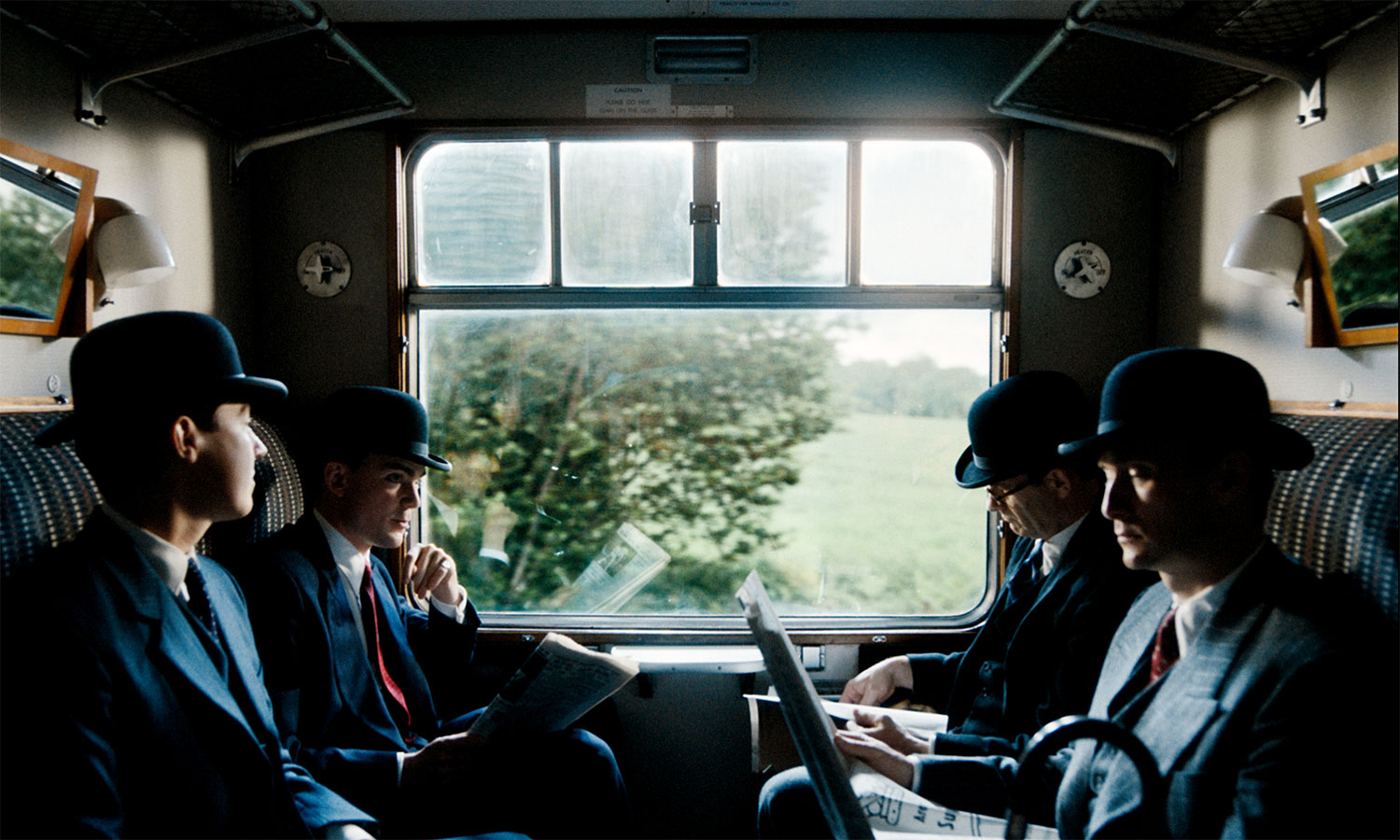
She, full of hope beyond her station, opens his eyes to the possibilities life still might hold. And it is this carpe diem moment that propels him back to the office to make a change, to make a difference, no matter how small.
Based on the 1952 Akira Kurosawa film “Ikiru,” “Living” has been exquisitely adapted by the Nobel Prize-winning novelist Kazuo Ishiguro (“Remains of the Day”). The story is simple, but the character development is among the best you will ever see and that is all in the writing. The subtle change in bearing and outlook occur almost imperceptibly from beginning to end. The dialogue is sparse and yet its economy is positively poetic. Although this is a story centered on Williams, the supporting cast’s actions or, in some cases, non-actions help define Williams while also shining a light on them and what they may or may not become in the future.
Directed with a very sure hand by Oliver Hermanus, he does justice to the script and pulls the story together by successfully creating a world that in some ways is long gone and in others, psychologically, remains the same. His sense of what this film should look like as well as what it should represent is masterful, taking a grain of sand and creating a vast beach. Why have we never heard of Hermanus before? He should be at the top of every list.
Cinematographer Jamie Ramsay has, as illustrated in the beginning, created a retro-look with the initial washed out colors that gradually gains depth along with the story. Production design by Helen Scott is beautifully on point. The opening titles of “Living” were inspired by every Ealing or Rank film of the 50s and 60s, blending seamlessly with the archival footage setting the scene at the beginning of the movie.
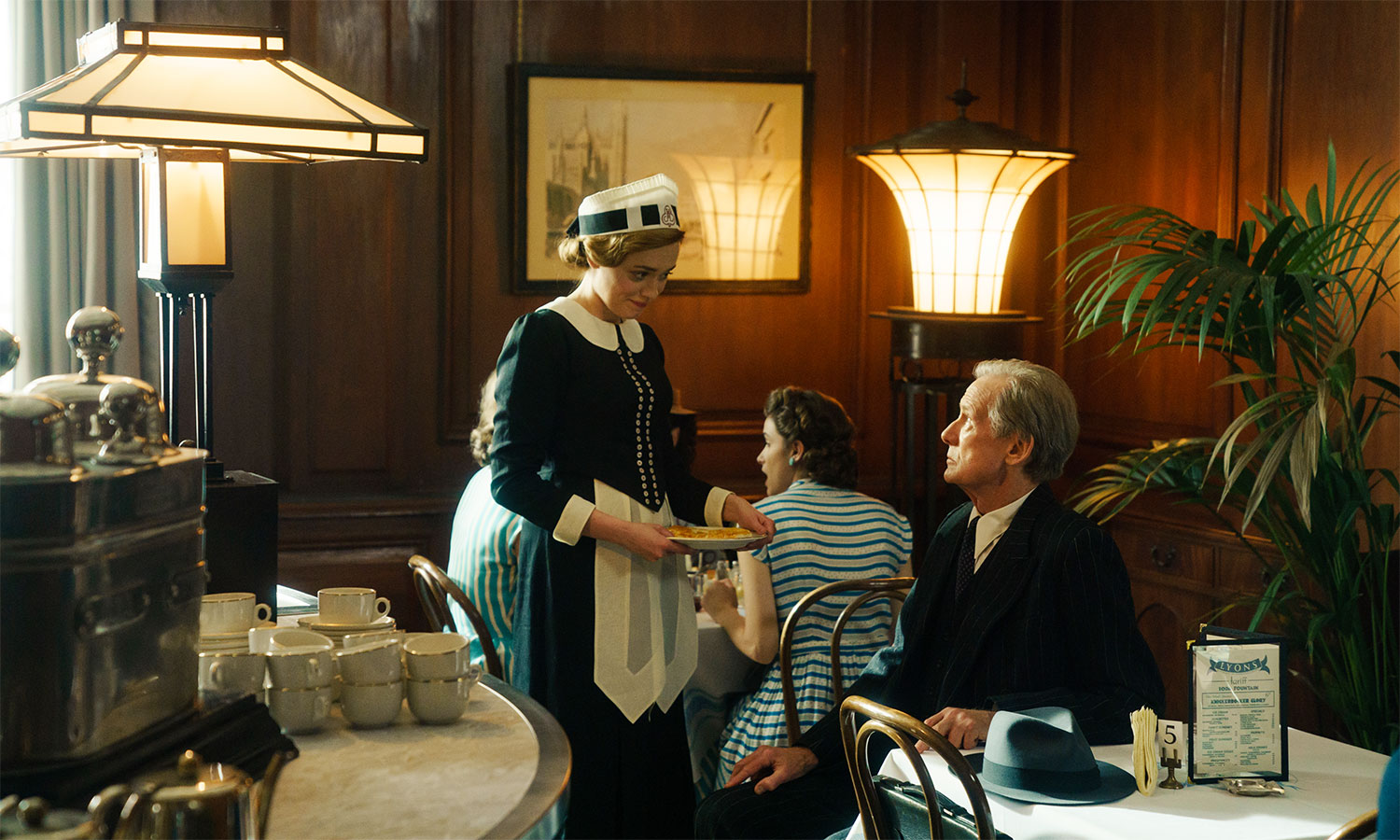
The acting is pitch perfect from the four middle managers, Alex Sharp as Wakeling, Adrian Rawlins, Middleton, Hubert Burton, Rusbridger, and Oliver Chris as Hart. Each wears his own insecurity and aspiration hidden in the breast pockets of their vests. Aimee Lou Wood as Miss Harris is the sparkling catalyst to an unexpected burst of warmth of the stiff upper lip Williams variety. She represents that first glimmer of a hope in a society stagnating in class consciousness. Wood, a standout in “Sex Education,” the fantastic British limited series on Netflix, shows a depth of character beyond her comedic background. She is winning, funny, warm, and the perfect foil to all the men who look past her.
The tour de force belongs to Bill Nighy as Williams. There is probably nothing that Nighy can’t do, but given a world-class script and great director, he soars. Nighy is a lesson in what character development is all about. This was not simply a case of starting out one thing and becoming something more or different at the end. Nighy takes the expectations of class, family, and hierarchy and ever so gradually leads you from cold circumspection to his end point of compassion and forgiveness, both of himself and of others.
Come Oscar time, this movie, Ishiguro, Hermanus, and Nighy will surely be nominations and strong contenders for the ultimate prize. This is a film not to be missed.
Opening Dec. 23 at the Laemmle Royal.



